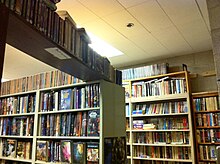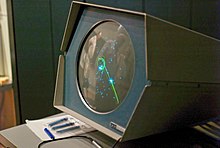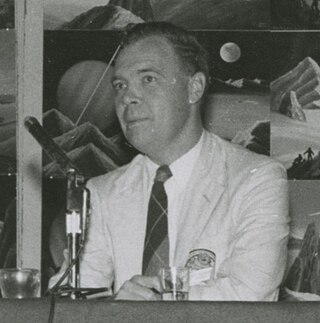
Harry Clement Stubbs, better known by the pen name Hal Clement, was an American science fiction writer and a leader of the hard science fiction subgenre. He also painted astronomically oriented artworks under the name George Richard.
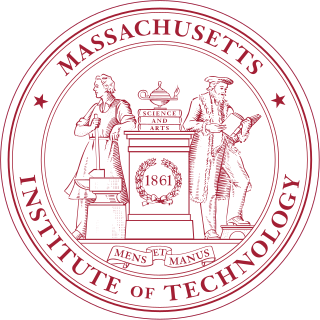
The Massachusetts Institute of Technology (MIT) is a private research university in Cambridge, Massachusetts, United States. Established in 1861, MIT has played a significant role in the development of many areas of modern technology and science.
Erwin S. Strauss is an American author, science fiction fan, noted member of the MITSFS, and filk musician, born in Washington, D.C. He frequently is known by the nickname "Filthy Pierre". He was injured descending a stairway at SMOFcon 41in December 2023, and in January 2024 announced his retirement.
Mesklin is a fictional planet created by Hal Clement and used in a number of his hard science fiction stories, starting with Mission of Gravity (1954). Alongside the novel's original 1953 serialization in Astounding Science Fiction, Clement published an essay titled "Whirligig World" detailing the process of designing the planet to have the properties he wanted. The idea came from an object that was at the time believed to exist in the 61 Cygni system, and which might represent an extrasolar planet.
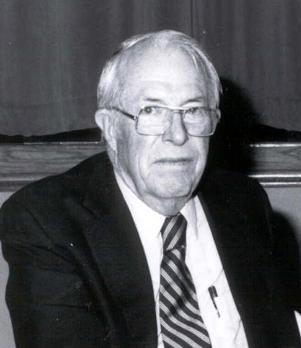
John Stewart Williamson, who wrote as Jack Williamson, was an American science fiction writer, one of several called the "Dean of Science Fiction". He is also credited with one of the first uses of the term genetic engineering. Early in his career he sometimes used the pseudonyms Will Stewart and Nils O. Sonderlund.

Judith Josephine Grossman, who took the pen-name Judith Merril around 1945, was an American and then Canadian science fiction writer, editor and political activist, and one of the first women to be widely influential in those roles.
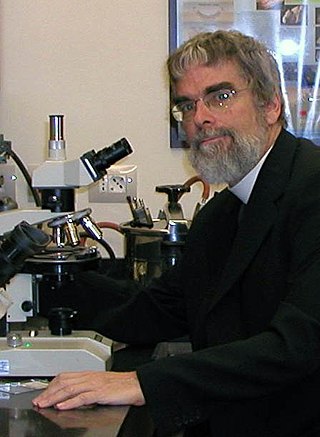
Brother Guy J. Consolmagno, SJ, is an American research astronomer, physicist, religious brother, director of the Vatican Observatory, and President of the Vatican Observatory Foundation.
The New England Science Fiction Association, or NESFA, is a science fiction club centered in the New England area. It was founded in 1967, "by fans who wanted to do things in addition to socializing". NESFA is currently registered as a non-profit literary organization under IRS section 501(c)(3).

A science fiction magazine is a publication that offers primarily science fiction, either in a hard-copy periodical format or on the Internet. Science fiction magazines traditionally featured speculative fiction in short story, novelette, novella or novel form, a format that continues into the present day. Many also contain editorials, book reviews or articles, and some also include stories in the fantasy and horror genres.

The White Dragon is a science fantasy novel by Irish writer Anne McCaffrey. It completes the original Dragonriders trilogy in the Dragonriders of Pern series, seven years after the second book. It was first published by Del Rey Books in June 1978.

NESFA Press is the publishing arm of the New England Science Fiction Association, Inc. The NESFA Press primarily produces three types of books:
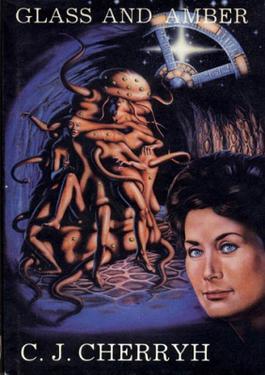
Glass and Amber is a 1987 collection of short stories and essays by American science fiction and fantasy author C. J. Cherryh. The book was published by NESFA Press to commemorate Cherryh’s appearance as the Guest of Honor at Boskone 24, a science fiction convention. Only 1,000 copies were printed, and each is individually numbered on the copyright page. The first 250 numbered copies were autographed by Cherryh and sold in slipcases. Some of these were also signed by Barclay Shaw, the cover artist.

The Massachusetts Institute of Technology occupies a 168-acre (68 ha) tract in Cambridge, Massachusetts, United States. The campus spans approximately one mile (1.6 km) of the north side of the Charles River basin directly opposite the Back Bay neighborhood of Boston, Massachusetts.
With the growth of science fiction studies as an academic discipline as well as a popular media genre, a number of libraries, museums, archives, and special collections have been established to collect and organize works of scholarly and historical value in the field.
The 21st World Science Fiction Convention (Worldcon), also known as Discon I, was held on 31 August through 2 September 1963 at the Statler-Hilton Hotel in Washington, D.C., United States.
The 29th World Science Fiction Convention (Worldcon), also known as Noreascon I, was held on 2–6 September 1971 at the Sheraton-Boston Hotel in Boston, Massachusetts, United States.
The 47th World Science Fiction Convention (Worldcon), also known as Noreascon 3, was held on 31 August–4 September 1989 at the Sheraton-Boston Hotel, Hilton Hotel, Boston Park Plaza, and the Hynes Convention Center in Boston, Massachusetts, United States.
The 54th World Science Fiction Convention (Worldcon), also known as L.A.con III, was held on 29 August–2 September 1996 at the Hilton Anaheim, Anaheim Marriott, and the Anaheim Convention Center in Anaheim, California, United States.
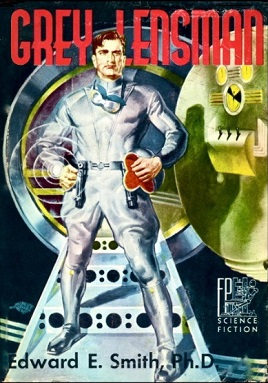
Grey Lensman is a science fiction novel by American writer E. E. Smith. It was first published in book form in 1951 by Fantasy Press in an edition of 5,096 copies. The novel was originally serialized in the magazine Astounding in 1939. Grey Lensman is the fourth book in the Lensman series and the second to focus on the adventures of Lensman Kimball Kinnison.

Once More* With Footnotes is a book by Terry Pratchett, published by NESFA Press in 2004 when he was the Guest of Honor for Noreascon Four, the 62nd World Science Fiction Convention. It contains a mixture of short stories, articles, introductions to other books, and speeches, including his first published short story, "The Hades Business".
